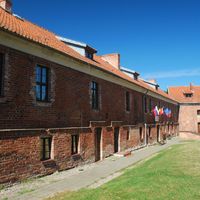Sztum
7.01

Overview
Sztum, located in the Pomeranian Voivodeship, is a town with a rich history dating back to the times of the Old Prussians. In the 14th century, after the Teutonic Knights defeated the Prussians, Sztum was granted town rights and became the seat of a Teutonic bailiff. The preserved 14th-century Teutonic castle, which includes remnants such as the southern wing, the entrance tower, and the prison tower, is the town's main landmark, and its history is inextricably linked with that of the region. Other important historical sites include the parish church of St. Anne, with its neo-Gothic interior, and the 19th-century former Evangelical church. The town hosts various cultural events, such as the Days of the Sztum Land and the International Sztum Solidarity Run, which attract both residents and tourists. Sztum has significant achievements in sports, with the football club Olimpia Sztum and various sports sections. The town was an important center of Polish identity, especially during the interwar period, when Polish organizations and institutions were active there. After World War II, Sztum became part of Poland. Today, Sztum is developing its areas and infrastructure, while also supporting local culture through the activities of the Sztum Center of Culture and other educational institutions. Despite historical challenges, the town has endured and is gaining importance as a tourist and cultural destination.
Location
You can also find here:
2025 Wizytor | All Rights Reserved
